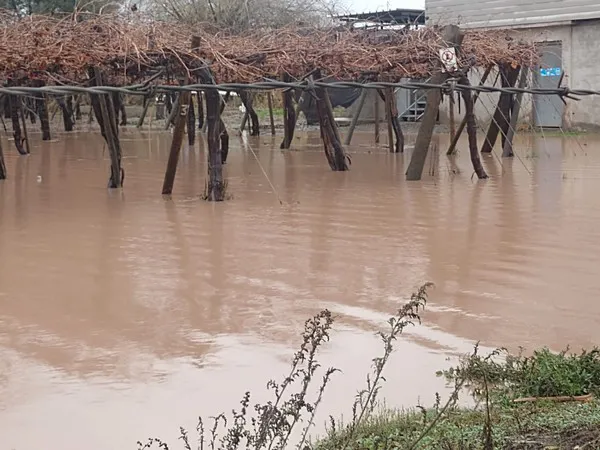Table grape, cherry and some blueberry fields in Chile are still wet, muddy and inaccessible after last week’s heavy rain and flooding. Vegetable producers are especially hard hit, while some producers have lost everything early reports from Chile indicate. According to Juan Pablo Orozco, Agronomist at producer and exporter Frucentro in Chile: “These rains in Chile have been the worst in the last at least 30 years.”

The fresh produce industry is still evaluating to see the extent of the damage with early indications showing infrastructure damage, while the effect on the fruit and vegetable plants will be seen in the longer term.
“Many rivers flooded lands, houses, etc. I don’t remember a winter with these kind of rain in so little time. We have some grape growers that got flooded but luckily it is winter and the trees and vines are dormant. It’s not so bad as long we don’t have damage such as scars or injuries in the trunk of the vines. We have to apply some sparring to prevent some of these, but it should be fine. We have vegetable producers with potatoes, lettuce etc. where the situation is different, for these growers the flooding is just a disaster.”

The heavy rains of over 600mm and flooding during 22-25 June, 2023 affected central-southern Chile, including the capital of Santiago as well as a key port of Valparaiso. Citrus, avocado and blueberry is now in season with vegetable production that is ongoing in Chile, while table grapes and cherries are in winter dormancy.
Another large producer and exporter of blueberries and cherries, with their farms situated in the most affected central valley of Chile commented as follows: “We had very big floods on some of our farms in Chilean. The blueberry farms are affected while there are big problems with the cherry orchards that are under water as well.”

Early assessments by the Federation of Fruit Producers of Chile (Fedefruta) shows that some producers have lost everything. In further comments from the president of the Federation, Jorge Valenzuela Trebilcock, there was a lot of infrastructure damage due to the flooding. This includes critical irrigation and pumps that was either washed away or badly damaged. Other equipment such as tractors that were in fields are also damaged. Fedefruta will release more information as results from the survey come in. However, they say many producers can still not access orchards due to mud, high water levels and generally inaccessible fields. They would have to wait for the water to recede and fields to dry out in order to establish how bad the damage was.

Other Chilean fresh produce industry experts confirmed the infrastructure damage: "A lot of irrigation infrastructure has been lost and an online cadastre is being made. Although plantations were lost, our impression is that it will be a minimum in the fruit area. Here the most important thing is the loss of infrastructure.”
For more information:
Juan Pablo Orozco
Frucentro
Tel: +56 221 21511
Email: [email protected]
www.frucentro.cl
